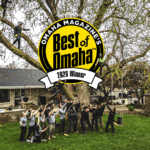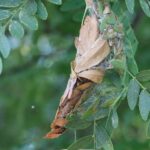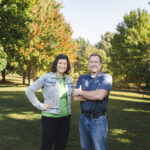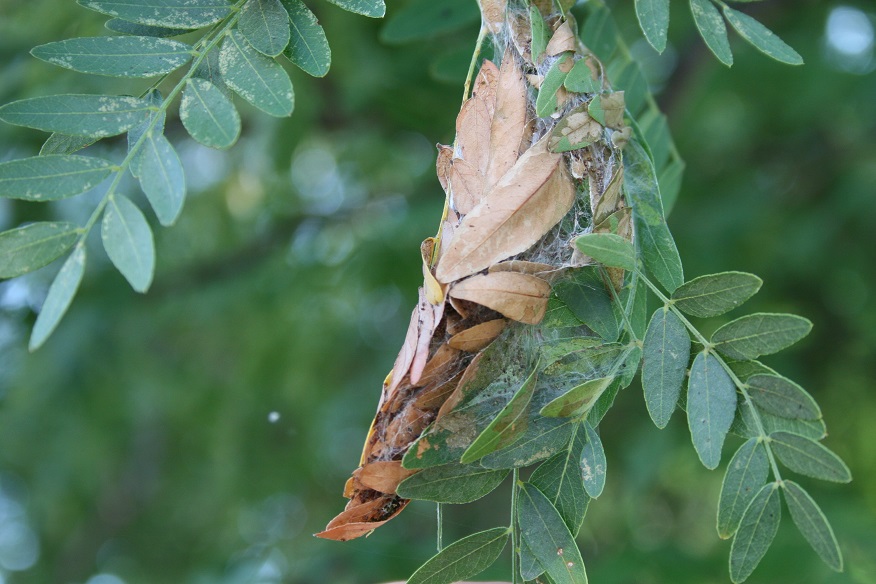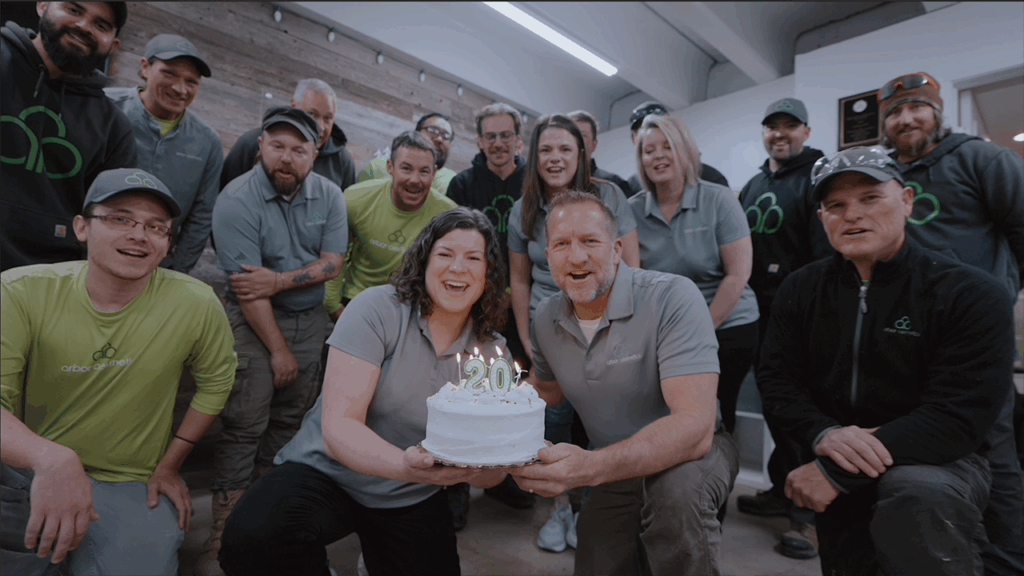Owning a tree service, we spend a lot of time looking at trees, even when we’re not on the job. Yesterday, we spotted some very unfortunate pruning work that just happened to be in the parking lot of a major nursery here in Omaha. We cannot stress enough the importance of quality tree pruning. Seemingly small errors, like the ones pictured below, can lead to serious consequences down the road.
DIY Pruning?
- Educate yourself
- Take your time
- Obtain proper tools
- Ask for help if needed
How NOT to Prune Live Branches
Below are examples of flush cuts, torn bark, and nicked adjacent branches, all of which challenge the tree’s “sealing” mechanisms and cause additional stress. Remember – trees don’t heal – they seal!





How to Properly Prune Live Branches
This information is taken from the USDA Forest Service’s brochure “How to Prune Trees.” It’s a great resource!
Target the Cut
To find the proper place to cut a branch, look for the branch collar that grows from the stem tissue at the underside of the base of the branch (Fig. 6A). On the upper surface, there is usually a branch bark ridge that runs (more or less) parallel to the branch angle, along the stem of the tree. A proper pruning cut does not damage either the branch bark ridge or the branch collar.
A proper cut begins just outside the branch bark ridge and angles down away from the stem of the tree, avoiding injury to the branch collar (Fig. 6B). Make the cut as close as possible to the stem in the branch axil, but outside the branch bark ridge, so that stem tissue is not injured and the wound can seal in the shortest time possible. If the cut is too far from the stem, leaving a branch stub, the branch tissue usually dies and woundwood forms from the stem tissue. Wound closure is delayed because the woundwood must seal over the stub that was left.
When pruning small branches with hand pruners, make sure the tools are sharp enough to cut the branches cleanly without tearing. Branches large enough to require saws should be supported with one hand while the cuts are made. If the branch is too large to support, make a three-step pruning cut (Fig. 6C) to prevent bark ripping (Fig. 7C).
Target the Cut
To find the proper place to cut a branch, look for the branch collar that grows from the stem tissue at the underside of the base of the branch (Fig. 6A). On the upper surface, there is usually a branch bark ridge that runs (more or less) parallel to the branch angle, along the stem of the tree. A proper pruning cut does not damage either the branch bark ridge or the branch collar.
A proper cut begins just outside the branch bark ridge and angles down away from the stem of the tree, avoiding injury to the branch collar (Fig. 6B). Make the cut as close as possible to the stem in the branch axil, but outside the branch bark ridge, so that stem tissue is not injured and the wound can seal in the shortest time possible. If the cut is too far from the stem, leaving a branch stub, the branch tissue usually dies and woundwood forms from the stem tissue. Wound closure is delayed because the woundwood must seal over the stub that was left.
When pruning small branches with hand pruners, make sure the tools are sharp enough to cut the branches cleanly without tearing. Branches large enough to require saws should be supported with one hand while the cuts are made. If the branch is too large to support, make a three-step pruning cut (Fig. 6C) to prevent bark ripping (Fig. 7C).



Cut in Three Steps
- The first cut is a shallow notch made on the underside of the branch, outside the branch collar. This cut will prevent a falling branch from tearing the stem tissue as it pulls away from the tree.
- The second cut should be outside the first cut, all the way through the branch, leaving a short stub.
- The stub is then cut just outside the branch bark ridge/branch collar, completing the operation.
Check your Work
The quality of pruning cuts can be evaluated by examining pruning wounds after one growing season. A concentric ring of woundwood will form from proper pruning cuts (Fig. 6B).
Flush cuts made inside the branch bark ridge or branch collar, result in pronounced development of woundwood on the sides of the pruning wounds with very little woundwood forming on the top or bottom (Fig. 7D). As described above, stub cuts result in the death of the remaining branch and woundwood forms around the base from stem tissues (Fig. 7E).
The quality of pruning cuts can be evaluated by examining pruning wounds after one growing season. A concentric ring of woundwood will form from proper pruning cuts (Fig. 6B).
Flush cuts made inside the branch bark ridge or branch collar, result in pronounced development of woundwood on the sides of the pruning wounds with very little woundwood forming on the top or bottom (Fig. 7D). As described above, stub cuts result in the death of the remaining branch and woundwood forms around the base from stem tissues (Fig. 7E).
Cuts that HARM



